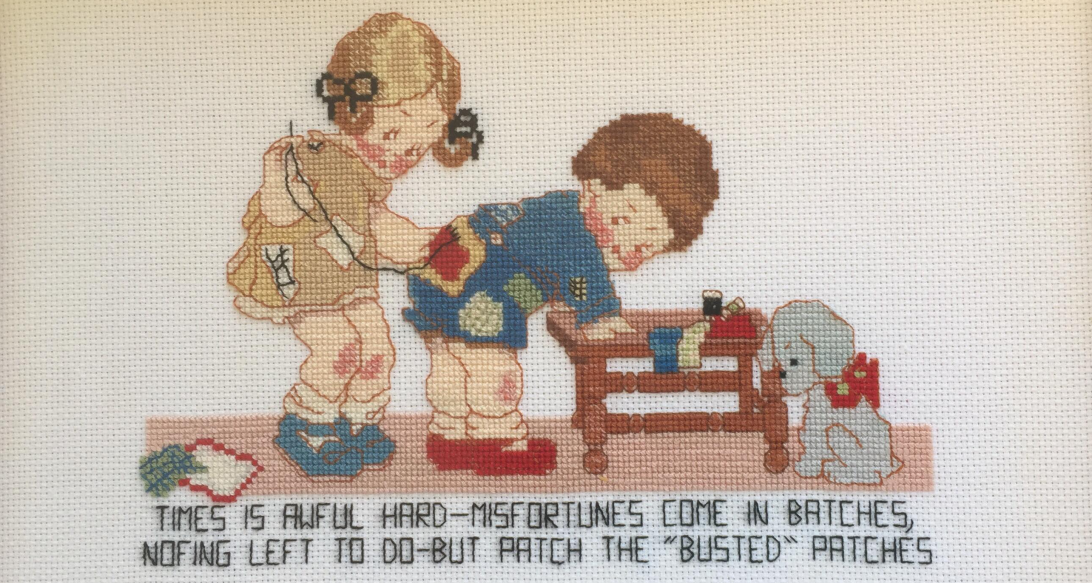In my last post I touched on the concept of ‘small stories’, the brief, fragmented, conversational narratives that arise naturally in our everyday interactions. Small stories are everywhere: doctor-patient encounters, business meetings, phone calls, talk in the car, and conversations between friends are just some of the interactional contexts where small stories emerge. The question that continues to pulse is how to capture these spontaneous and fleeting snippets of talk in action.
One issue with collecting small stories is the inevitable influence of the researcher’s involvement. For data to be considered ‘naturally-occurring’, Potter (1996, p.135) says that it must pass the ‘dead social scientist test’: that is, the data used should be based on an interaction that “would have taken place in the form that it did had the researcher not been born or if the researcher had got run over on the way to the university that morning”. But the ethical requirement that one must first obtain the informed consent of participants makes it hard to see how any data could be collected had the researcher “not been born”.
The famous sociolinguist William Labov used the term “observer’s paradox” to describe the difficulties of obtaining natural speech in research situations. As he puts it: “The aim of linguistic research in the community must be to find out how people talk when they are not being systematically observed; yet we can only obtain this data by systematic observation” (1972, p.209). While it is widely accepted that the observer’s paradox can never be completely overcome, researchers across the social sciences have sought to obtain data that is as close to naturally-occurring as possible (Gordon 2012). To do this, they have used research methods such as audio or video recordings and participant observation of some form or other. But for those of us who are narrative inquirers, gatherers of, and listeners to stories, these methods set off all sorts of alarm bells.
Narrative inquiry is a relational inquiry. Clandinin and Connelly (2000, p.189) tell us that “relationship is key to what it is that narrative inquirers do”. As narrative inquirers, we do research with rather than on our participants. We step out from behind the bushes and walk alongside them. We treat stories as gifts that are shared with us through the generosity of those whom we want to learn more about. It is precisely for these reasons that the thought of using recording devices or mechanically observing interactions troubles me. Like Blix (2016, p.29), I worry about becoming an “academic parasite”, intruding into people’s lives only to extract their stories away from them and scramble out post data collection.
I ask you, then, how do we approach studying small stories narratively? What kinds of methods should we use if we are to maintain a relational ethical stance in small story research? I’m drawn to Ron Pelias’ (2011) description of leaning in during everyday life encounters as a way to think about the study of small stories. Is it possible to “lean in” as Pelias suggests, to engage in the everyday life worlds of our participants without creating a sense of surveillance and eavesdropping?
One might say that I am caught in what Derrida (1993, p.12) calls aporias, moments of “not knowing where to go”. But as Caine (2010) reminds us, narrative inquiry is a fluid form of investigation; it is like travelling to and within unfamiliar landscapes without a map. What compels me to think carefully and critically about my choice of methods is that the participants I will be working alongside are in a vulnerable space. I will be entering the lives of families at a time of great disruption when serious illness calls forth important and sometimes difficult stories. This kind of research demands methods that build the highest level of sensitivity into their core.
References
Blix, BH 2016, ‘The Importance of Untold and Unheard Stories in Narrative Gerontology: Reflections on a Field Still in the Making from a Narrative Gerontologist in the Making’, Narrative Works: Issues, Investigations & Interventions, vol.6, no.2, pp.28-49.
Caine, V 2010, ‘Narrative Beginnings: Traveling To and Within Unfamiliar Landscapes’, Qualitative Health Research, vol.20, no.9, pp.1304-1311.
Clandinin, DJ & Connelly, FM 2000, Narrative inquiry: Experience and story in qualitative research, Jossey-Bass, San Francisco.
Derrida, J 1993, Aporias: Dying – Awaiting (one Another at) the “Limits of Truth”, Stanford University Press, Stanford.
Gordon, C 2012, ‘Beyond the observer’s paradox: the audio-recorder as a resource for the display of identity’, Qualitative Research, vol.13, no.3, pp.299-317.
Labov, W 1972, Sociolinguistic patterns, University of Pennsylvania Press, Philadelphia.
Pelias, R 2011, Leaning: A poetics of personal relations, Left Coast Press, Walnut Creek, California.
Potter, J 1996, ‘Discourse analysis and constructionist approaches: Theoretical background’, in J Richardson (ed.), Handbook of qualitative research methods for psychology and the social sciences, BPS Books, Leicester, pp.125-40.
